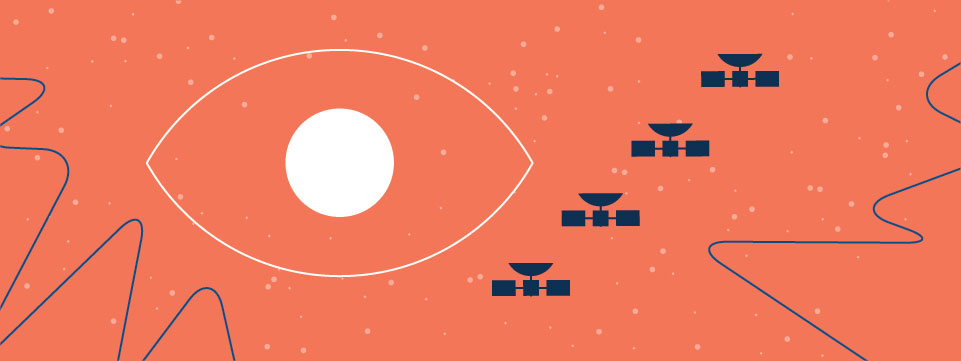Level 1 - Spot a satellite in the night sky

Spotting satellites in the night sky can be a relaxing, rewarding activity. The serenity of contemplating the night sky, the thrill of catching a satellite passing by at 28,000kph.
What does Satellite Tracking Involve?
- The time at which you observe the satellite cross an imaginary line between two known stars
- Your location on Earth when you made this observation (Latitude, Longitude, and Elevation)
If you’re new to the sport, don’t worry about trying to time a satellite on your first outing. We’ll walk you through a progression of activities to build your skills and help familiarize yourself with the night sky.
Right now, timing a satellite is a relatively manual process and takes some practice. But we're working to continually add features to make this process easier.
Spot a satellite in the night sky
If you look up for long enough, you’ll see a star-like point of light moving continuously across the night sky. That’s a satellite! Spotting your first satellite this way, without worrying about timing it, is a good way to get acquainted with the night sky, and how satellites move through it (if it blinks, it’s probably an airplane).
- Satellites are most visible in certain windows of the morning and evening, when the sun is low enough for a dark sky, but still high enough to cast light reflected by the satellite. The best time to spot a satellite is 30 - 90 minutes after sunset or before sunrise. Expect to see more stars than you can quickly count when scanning the sky in that time frame.
- If it’s a clear night and you’re in an area without too much light pollution, you’ll be able to see a number of satellites with your bare eyes. A pair of binoculars will greatly increase the conditions in which you can spot satellites.
- Train your eyes (or binoculars) on a fixed point in the night sky and wait. Relax, breathe deeply, and contemplate just how large our universe is. Pro tip: if you want to look straight up, laying on your back will save your neck.